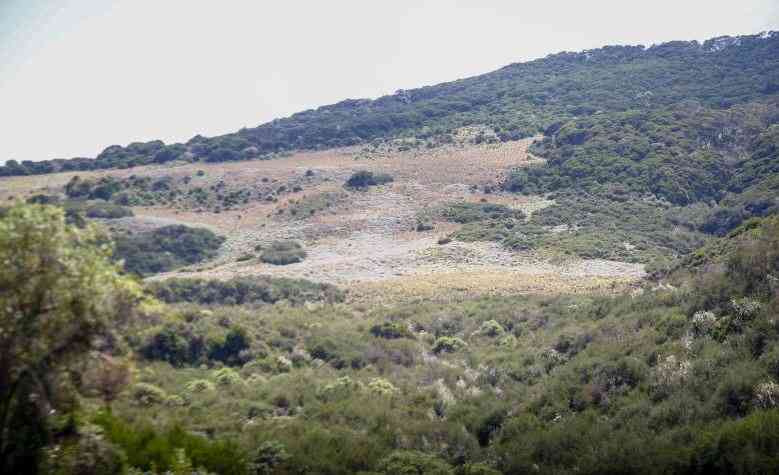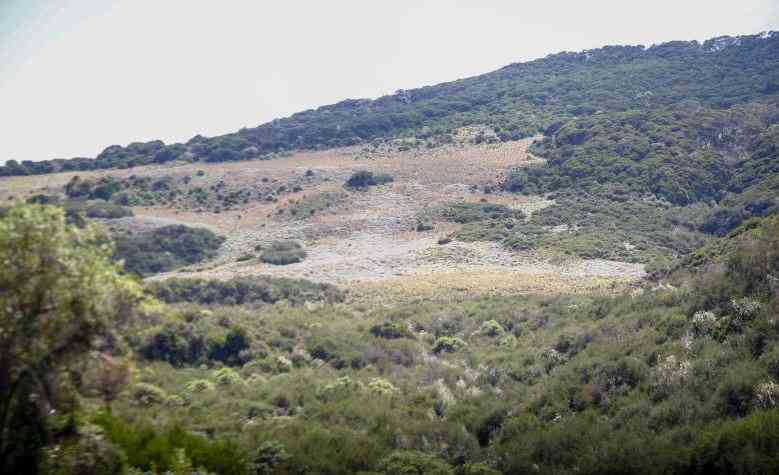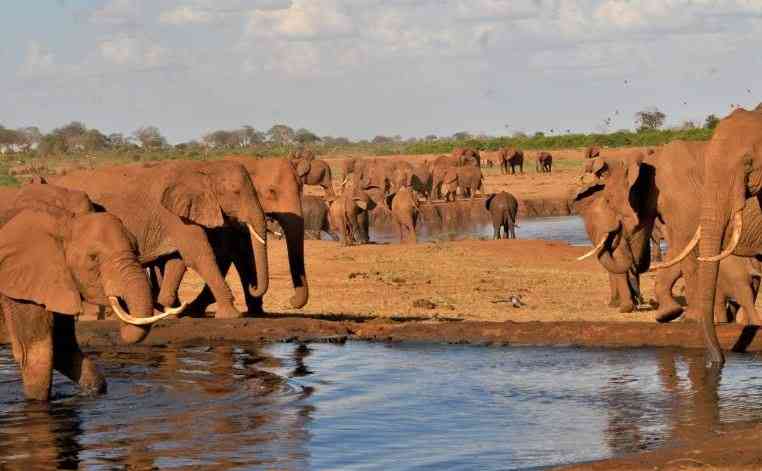
For years, the contentious proposal for the upgrade of the Ihithe-Aberdare Forest-Kahuruko-Ndunyu Njeru Road, more commonly known as the Mau Mau Road, has consistently been on the headlines.
At a cost of Sh4.4 billion, this ambitious road project spanning 54 kilometers has pitted conservationists against politicians in a relentless push-and-pull. With us are two Rhino Ark Charitable Trust organization staff. Together, we eagerly ventured forth, weaving through the scenic expanse, eager to uncover the secrets that lay ahead.
"There are several gates from Nyeri to Nyandarua, Treetop Gate, Ark Gate, Ruhuruini Gate, and Kiandongoro Gate. Let's opt for Kiandagoro Gate; it's more convenient from here," said Adams Adams Mwangi, the Rhino Ark Community Fencing Manager.
Dedicated to Aberdares ecosystem conservation, Adams explains that Rhino Ark Charitable Trust began the fencing project in 1988, installing an electric solar-powered fence. Originating as a 38km fence along the Park Salient, this initiative transformed over 21 years into the world's longest conservation fence, covering almost 400km.
Continuing our journey, we ascended through steep terrain, unveiling breathtaking panoramas. To the right, the Chania River Valley unfolded, and on the left, the Gura River carved a profound ravine. Ahead, the majestic peaks of the Aberdare ranges were shrouded in mist.
Elusive gazelles and a vibrant array of birds graced our path, transforming our expedition into a captivating exploration of nature's wonders.
The landscape revealed a vibrant array of wildlife, including elephants, buffalos, and bushbucks. Progressing through bamboo-laden terrain, we spotted primates like Sykes monkeys and Jackson Franklin's birds. Black rhinos, leopards, and the haunting calls of spotted hyenas added to the experience. Forested paths echoed with playful baboons, colobus monkeys, grazing buffalos, warthogs, and the graceful presence of bushbucks, creating a dynamic journey.
Unfortunately, we didn't spot the elusive Mountain Bongos, classified as critically endangered by The International Union for Conservation of Nature (IUCN).
Once numbering around 500 in 1975, today, less than 80 individuals remain globally. Adams attributes their decline to diseases, poaching, and habitat degradation, expressing sorrow for their critically endangered status.
The journey took us higher, ascending into an area blanketed entirely by bamboo. Reaching Kiandongoro Gate, a crucial checkpoint, we enjoyed stunning views of Aberdare moorlands at an altitude of 3000 feet above sea level.
"In conservation, this grass is vital. It forms a mat that acts like a sponge during rain, absorbing and retaining water. Slowly, it discharges water, contributing to the permanent rivers originating from Aberdare." Adams enlightened me
According to a 2017 report by the Wildlife Conservation Society and Rhino Ark, supported by the Kenya Wildlife Service and the Kenya Forest Service, the estimated elephant population in the Aberdare ecosystem is 3,568. This population constitutes nearly 10 per cent of Kenya's total elephant population.
Continuing our journey through the southern moorland of Aberdare National Park, a signpost emerged, announcing Magura Waterfalls. Descending towards the falls, a cautious post signaled us to proceed carefully, heightening the anticipation as we approached Magura Waterfalls.
The rhythmic thundering of water grew louder with each step, creating an immersive experience. Cascading roughly 20 feet, the falls commanded attention thundering into the rocks, surrounded by a lush landscape where frothy waters roared, colliding into a pool with imposing force.
"It's called the Queen's Cave, rumoured to have been used as a hiding place during the Mau Mau wars."
The dense forest with tree trunks adorned in Spanish moss, Adams informed me Spanish moss signifies the environment's natural state without pollution. Four kilometers later, we reached the junction leading to Karuru Waterfalls, one of Aberdare's highest waterfalls.
"If you get a chance to touch the water, it's very cold, and it has trout fish. Those interested in angling can obtain a license from KWS officers," said Adams
Moving approximately 15 kilometers, we reached Mutubio West Gate, situated at an altitude of 3,203 meters above sea level. The plateau offered cool weather and mist, providing us with a splendid view of the Nyandarua Plateau. Our journey through the Aberdare Forest Ecosystem concluded at Geta Forest Station.
This is not the first time the construction of the road has been opposed. On October 27, 2009, Nema refused to approve the project, citing its significant impacts on the forest. The Kenya Wildlife Service, Kenya Forest Service, African Wildlife Foundation, Rhino Ark, Kenya Tourism Federation, and the East Africa Wildlife Society all strongly opposed the project at that time.
 The Standard Group Plc is a multi-media organization with investments in media platforms spanning newspaper print
operations, television, radio broadcasting, digital and online services. The Standard Group is recognized as a
leading multi-media house in Kenya with a key influence in matters of national and international interest.
The Standard Group Plc is a multi-media organization with investments in media platforms spanning newspaper print
operations, television, radio broadcasting, digital and online services. The Standard Group is recognized as a
leading multi-media house in Kenya with a key influence in matters of national and international interest.











